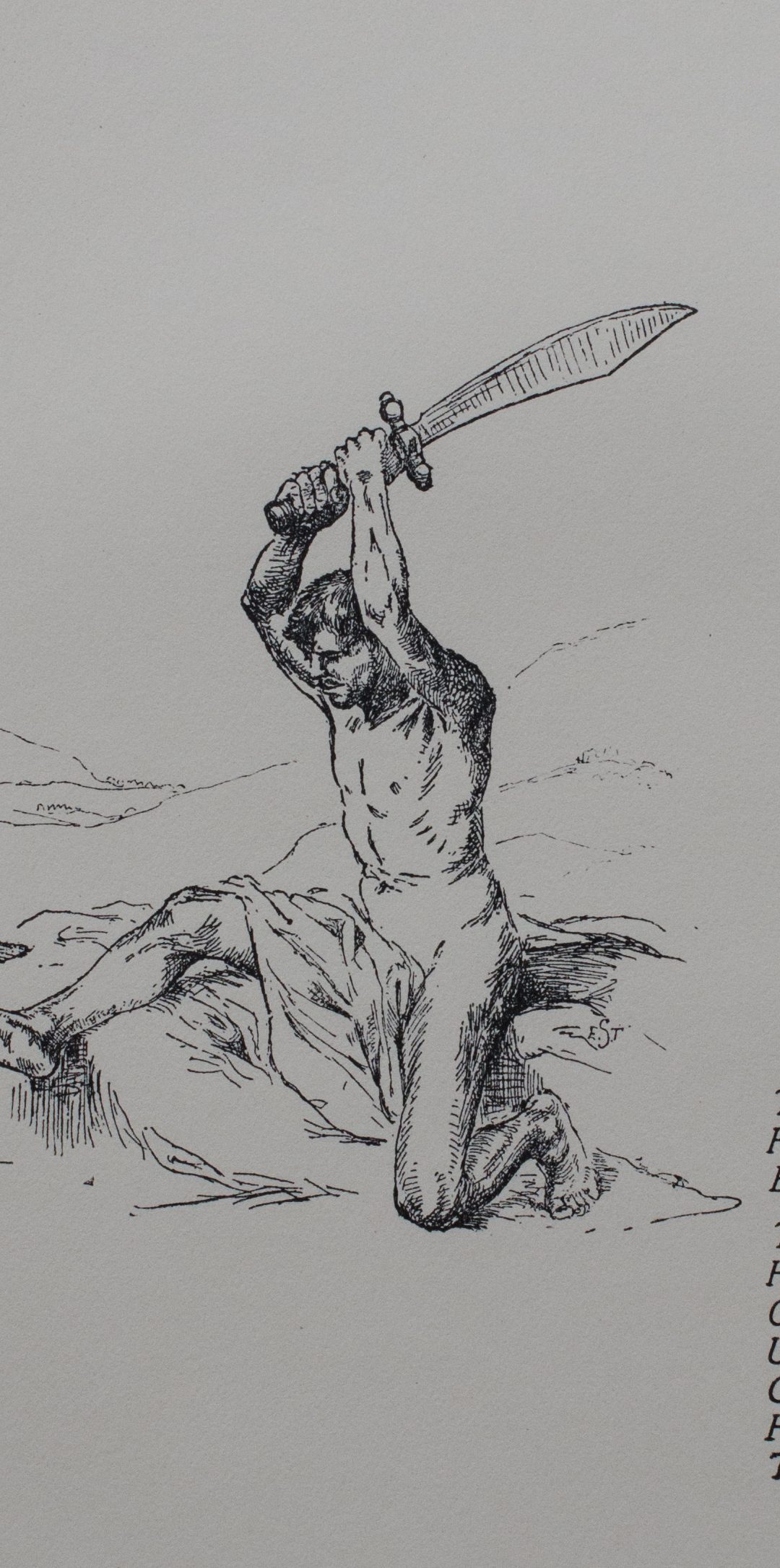Ernest Thompson Seton (1860-1946) The Thought, Reproduction from original drawing, 1901, collection of the Academy for the Love of Learning. The mastery of mankind (literally, a white man) over nature. (The regenerative aspect of nature is represented by a bird that buries tree seeds.) He will achieve certain victory. But at what cost?
Last year, when I started work on our latest exhibition, “Endangered” (opening August 2020), the COVID-19 plague was still a nightmare away (although infectious disease specialists have for years warned of inevitable pandemic). I first learned about the subject from science journalist Laurie Garrett writing in Foreign Affairs.
In August 2019 when I put out a call to artists inviting them to take part in the show, I thought that threatened species or climate disruption would be in the forefront of artist interest. (I included an image of Seton’s 1927 version of The Thought in the Curator’s Notes section of this site.) Those subjects will be represented—and others as the list of problems keeps growing. Over the next few months we will create a virtual on-line presence of the artwork for those who cannot visit the on-the-wall show at the Seton Gallery.
A Lament
Ninety-three years ago, Ernest Thompson Seton wrote an essay, A Lament, predicting that the end of our civilization would arise from the destruction of wild nature. He did not specify any one reason such as atmospheric pollution, a virus jumping from animal species to humans, or habitat loss. Instead, he implied that the base cause was humanity’s ignorance, arrogance, and greed. I’ll have much more to say on this subject in the Curator’s Notes section. This entry is about the art—take a close look at the image. What do you see? Share your thoughts if you wish. You can reach me through Academy for the Love of Learning web site.

